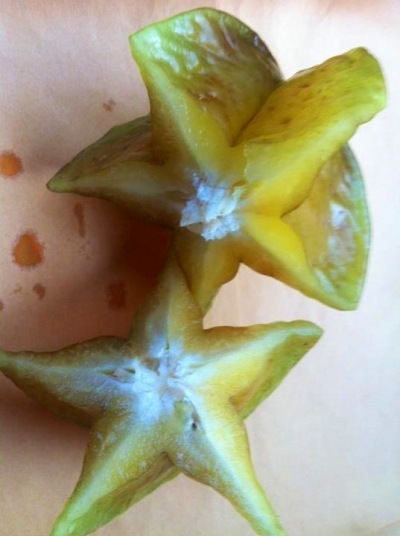Averrhoa carambola
Reproduction
Averrhoa carambola is an Angiosperm, meaning flowering plant. Their seeds are covered by a fleshy fruit which is then covered by a waxy surface. Carambola in the United States (Florida) have two major blooms a year. One between April and May and the second between September and October. Fruiting starts around the 2nd-3rd year.
The actual fruit itself has a green hue and when at maturity the color changes into a yellow hue. They grow to be around 2-6 in, in length and contain 5 longitudinal ribs (the majority of the time). It is these ribs that make up the points of a star when the are cut at their cross section.

The amount of fruit produced by the tree increases with age. During the first couple of years you can expect to find 10-40lbs of fruit per year for every tree planted. Fully matured trees that have hit around a decade can produce up to 250-350 lbs of fruit per tree each year!
The seeds can be transmitted via animals or some other way of facilitated manual transport. The only problem is that these seeds are not very durable, they can lose their viability within just a few days. This creates problems for the ability of the tree to reproduce and give rise to another tree.
Since we are talking about Angiosperms here, we can't forget the flowers! The petals have a pink to lavender hue and since they are also classified as a dicots the flower is composed of 5 petals and the compound leaves are arranged alternately along the branch. The flowers are then pollinated by bees and this interaction contributes directly into the production of more fruit.